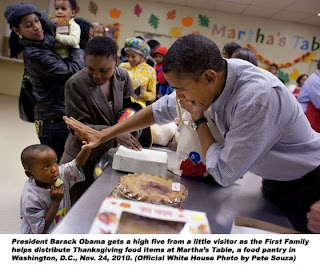Posted by
White House
This morning, the Obama Administration issued a regulation implementing a provision of the Affordable Care Act that will require insurance companies to spend at least 80 to 85 percent of premium dollars on medical care and health care quality improvement, rather than on administrative costs, starting in 2011. If they don’t, the insurance companies will be required to provide a rebate to their customers starting in 2012.
President Obama highlighted the new policy in an email this afternoon, and White House Office of Health Reform Director Nancy-Ann Deparle has recorded a new White House White Board video discussing the policy.
Consumer groups, Congressional leaders and advocates are praising the new rules for helping to give consumers a better value for their premium dollar and brining transparency to the health insurance marketplace. Here’s what they are saying:
American Medical Association
"Patients deserve to get the maximum value from their health insurance premiums, and requiring that at least 80 percent of the patients' premium dollars be spent on medical care can help accomplish this goal. The AMA worked closely with the National Association of Insurance Commissioners (NAIC) to prevent the health insurance industry from undermining this important patient benefit from the new health care law."
National Business Coalition on Health
"NBCH is pleased to see that quality improvement efforts will be considered a direct medical expense and not administrative overhead. This strengthens the incentive for health plans to invest in developing a robust quality improvement infrastructure than can drive the health care system towards higher value."
AARP
"We are pleased that the Administration has adopted consumer-friendly medical loss ratio rules that, on the whole, strike a smart balance between ensuring value for consumers and compensating insurers for legitimate administrative costs. Coupled with new benefits under the health care law, these regulations ensure consumers will receive better value for their health care dollars."
Consumers Union
"The term ‘medical loss ratio’ isn’t exactly consumer-friendly, but these new rules are very good for consumers. People are going to get better value for their premium dollars."
American Cancer Society Cancer Action Network
"The Affordable Care Act for the first time requires health insurance companies to disclose information that is intended to help consumers understand the value they are getting for the premiums they pay. This strong rule will help to ensure that patients are accurately informed about the portion of their premiums that are spent on medical care instead of company profits, broker commissions or administrative costs. It signifies the start of a critical consumer-education process that will finally help people with cancer or at risk for cancer to make informed decisions about the plans they purchase."
Speaker Nancy Pelosi
"Today, we take a major step forward to ensure consumers more value for their health care dollars, increasing transparency and requiring health insurers to spend 80 to 85 percent of consumers’ premiums on direct care for patients and efforts to improve care quality."
Congressman Henry Waxman
"In today’s market, too many insurers – particularly in the individual health care market – charge high premiums and yet spend 30 percent or more on administrative costs, high salaries, and profits. The American public deserves to know what happens to their premium dollars, and they deserve to have those dollars devoted to providing health care services."
Senator Max Baucus
"This rule delivers better health care to individuals and families and more value for every dollar spent on health care, ensuring consumers’ premium dollars are spent on quality care, not insurance company profits. By increasing transparency and making clear how insurers spend premium dollars, health reform helps end insurance companies’ abuses, including unjustified premium increases."
Senator Tom Harkin
"Finally, millions of American consumers will be able to pay their health insurance premiums with some confidence, knowing that those dollars will go towards their health care rather than executive salaries or administrative costs. Because of the historic consumer protections in The Affordable Care Act, insurers will now be held strictly accountable for providing a high value for every premium dollar and reporting the results to consumers."
Senator Patty Murray
"These new rules will make sure that the premiums paid by families in my home state of Washington go toward health care for patients, not excessive profits for insurance companies. We worked to reform our broken health care system to make sure patients and families came first, and this new rule is an important step toward that goal."
Senator Al Franken
"Implementation of the medical loss ratio provision is a huge step toward ensuring consumers’ premium dollars go to actual health care, not insurance company coffers. Many health insurers spend as little as 65 percent of your premiums on care, and the rest goes to enormous CEO salaries, advertising, or wasteful administrative costs. These regulations will hold health insurers accountable and make sure consumers get more value for their money."
Congressman Pete Stark
"The new medical loss ratio standard will help consumers get better value for their health insurance -- ensuring that at least 80 cents of every patients' premium dollar is spent on medical care. This important consumer protection is another example of how health reform will help consumers even before full implementation of the law in 2014."
Congressman Sander Levin
"Today’s announcement is yet another example of how health reform is putting the consumer first and guaranteeing that Americans will get the full value of their premium dollar."
Senator Ben Nelson
"This new pro-consumer, states-developed rule means Nebraskans will know that most of the money they pay for insurance is being spent on medical care and quality improvement initiatives, rather than on administrative overhead, marketing and profits."





